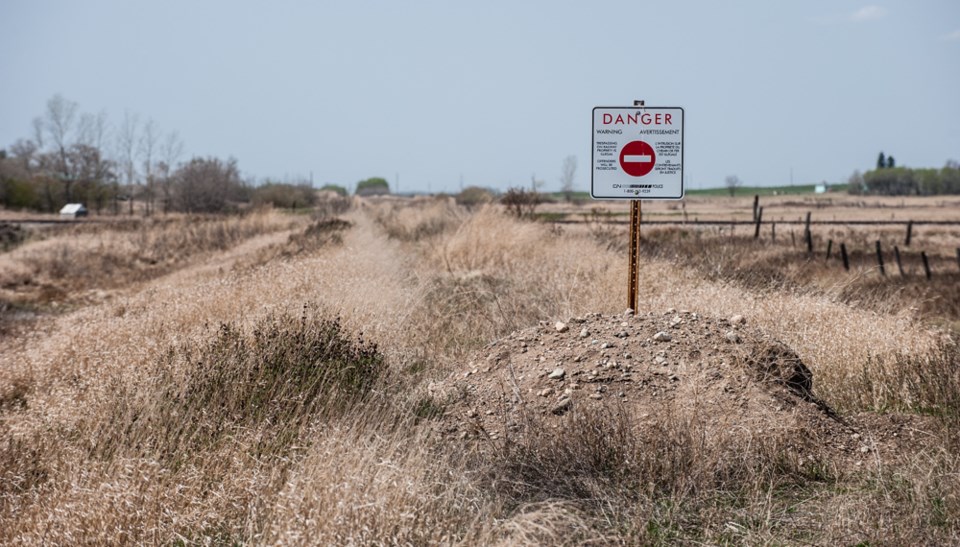ÌýYou never know what sort of conversations you might have at a conference, and last month I had two at the Williston Basin Petroleum Conference that got my head’s hamster spinning on its wheel.
One was with a trade official, another was with a consultant on crude-by-rail, James Baker, of Regina.
I have spent more time than I care to admit looking at Google Maps, looking for interesting items and patterns. Some of that time was spent retracing the long-abandoned CN railbed that once ran from most of the way from Lampman to Northgate, and from there onto what is now the BNSF network. It’s not that far from Lampman to Stoughton to make the connection.
What if most of this line, and a short bit of new railbed, was rebuilt, connecting Stoughton to Northgate and the BNSF from there? The largest crude-by-rail facility in southeast Saskatchewan, Crescent Point’s facility, which has been moved and then expanded in recent years, would then have a straight shot into America and dozens of refineries.
Now, I grew up as a farm kid. As a farmer, if it fails to rain, you blame the Canadian National Railway. And if it hails, blame Canadian Pacific.
The reality is that for Crescent Point to ship its oil, it has to be hauled in exactly the wrong direction, back to Regina, and from their either east or west to interconnect with other railways to get to where you want the crude to go. Generally speaking, railways don’t like to play nice with each other, so even if their tracks cross, it doesn’t mean they’ll let you switch tracks to another railway all that easily. That might make common sense to you and me, but you and me don’t run railways.
Now consider the mindset of Crescent Point. It was stung by pipeline apportionments back in 2010 when Enbridge’s Line 6 spilled into the Kalamazoo River in Michigan. Since then the company has been very keen to ensure there are rail loading facilities of their own or a third party situated near almost every one of their major operating areas. Those facilities are closely matched to local production. If the company wanted to it could theoretically ship almost every drop of Viewfield Bakken oil by rail out of its Stoughton facility instead of pipeline.
So for a shrewd operator like Crescent Point, having the ability to totally forego the Canadian mainlines does several things: They could bypass any Canadian mainline rail strikes (not like those ever happen); it gets them off the congestion of the Canadian mainlines, especially at winter (which our railways seem to have forgotten how to operate in); it cuts the distance to most, if not all, U.S. markets by hundreds of track-miles, which means lower shipping costs; it opens up easier access to almost all U.S. markets; and finally it gives them to option to tell any one of their shipping options to stick it.
What do I mean by that? It’s a very good bet that Crescent Point will eventually have the ability to ship oil on the proposed TransCanada Energy East pipeline. It already has this ability on the Enbridge mainline. It currently has the ability to ship crude-by-rail via shortline Stewart Â鶹ÊÓƵern Rail onto the Canadian Pacific mainline via Regina. Conceivably it could also find its way onto Canadian National from there. But by connecting directly to BNSF via Northgate using rebuilt rail, conceivably run by SSR, Crescent Point could play all the others against each other for price. They could tell any one of them, or all of them, to pound sand, if they so choose.
I imagine there are a lot of farmers who wish they had that option.
There are other possibilities, too. For instance, that old railbed runs right past the BP Steelman gas plant – which could make use of rail to ship NGLs. I can make out the old rail loading spur in the satellite images.
The Enbridge Steelman terminal on its Westspur system is only two miles away from the BP plant. Could there be a pipeline/crude-by-rail opportunity there?
Crescent Point has its own large gas plant, with NGL production, near Stoughton. How hard would it be to run a pipeline from that plant to its Stoughton facilities for NGL loading?Ìý
There are some logistics in rebuilding that rail bed. Someone might have to talk nicely to Mel Grimes about moving some things around in his yard for Grimes Sales and Service. It looks like the runway at the Lampman airport might have once been the railbed. There’s been something of a lake north of Lampman for several years where the old railbed ran. There might need to be some dirtwork improvements and a few new bridges. But compared to how much work might go into a pipeline with the capability of 70,000 barrels per day (a unit train), this is easy peasy.
I never thought I would see a real rail line, bigger than a spur track, built in my life. But it just might happen.Ìý
Ìý
Brian Zinchuk is editor of Pipeline News. He can be reached at [email protected].Ìý




